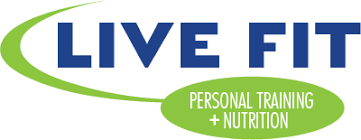Your Quick Guide To Real Weight Loss
For so many, losing weight seems to be in impossible task or a grueling endeavor. The idea of it conjures feelings of hunger, deprivation, and failure. In actuality, weight loss can be simple and achievable. Most importantly, it is worth pursuing if your weight is affecting your health.
WHY?
There are 93 million American Adults who are currently obese, and obesity is responsible for 112,000 deaths annually. Obesity greatly increases the risk of diabetes, hypertension, heart disease, stroke, osteoarthritis, and certain cancers. Even small amounts of weight loss can offer a multitude of health benefits. Studies show that a loss of as little as 5-10% of body weight can have a significant and important positive impact on cardiovascular health by:
· Increasing good cholesterol levels and decrease triglycerides
· Decreasing hypertension
· Decreasing A1C
· Decreasing insulin resistance
· Improving sleep apnea
· Decreasing inflammatory markers1
HOW?
Weight loss is, in its simplest form, is the result of consuming less calories than is needed to complete daily functions and activities. Begin by determining how many calories should be consumed daily. Knowing that 3,500 calories is the equivalent to one pound can be useful. For example, a 500 calorie deficit would correlate with losing one pound per week. It is important to note that weight loss occurring at a slow rate of 0.5lb-2lb per week is the most sustainable.2 If weight loss occurs more quickly than this, it is more likely to be regained. American College of Cardiology/American Heart Association Task Force on Practice Guidelines and The Obesity Society recommends that overweight and obese adults can use these calorie guidelines for weight loss: 1,200-1,500 calories/day for women and 1,500-1,800 calories per day for men.3
HELPFUL TIPS:
· Set goals
Goals should be SMART (specific, measureable, attainable, realistic, and time-based); set a series of short-term goals, one at a time to achieve the larger goals one step at a time.
· Monitor Progress
Keep track of weight loss and measurements. This is the only way to judge if goals are being met. If progress is not noted, the current methods may need to change, and if goals are being met, it lends motivation to continue.
· Keep a food diary
Often people are unaware of what they are eating. Keeping a food diary forces the observation of the quantity and quality of what is being consumed, and can also increase portion-awareness.
· Eat Breakfast
Eating breakfast can help prevent overeating later in the day from being overly hungry. Breakfast does not have to be eaten right after waking, and breakfast foods are not the only appropriate choices.
· Eat more fruits and veggies
The USDA recommends that half your plate is fruits and veggies at every meal.4 Fruits and vegetables are low in calories and fat and high in fiber, filling the stomach without adding too many calories. They are also high in nutrition.
· Read food labels
Be sure to check serving sizes to decipher the accurate amount of calories that is consumed. Also included in the food label is the fat, saturated fat, and fiber content of the food item, just a few of the nutrients that can make food choices healthier.
· Drink less alcohol
Alcohol contains calories, but has no nutrition. A single serving of spirits, beer, or wine each has at least 100 calories.4 Drink more than one serving of alcohol for women or 2 servings daily for men is not healthy.
· Plan meals and shopping
Planning meals ahead of time will help prevent impulse and convenience eating. Make shopping lists to prevent spending money on and stocking unhealthy foods.
· Increase activity
Increasing the calories expended will aid in creating the calorie deficit needed to lose weight.
For those struggling to implement these tips or wanting more guidance, the pros at Live Fit + Nutrition are a knowledgeable resource available to you.
Sources:
1. Obesity Action Coalition » Benefits of 5-10 Percent Weight-loss. (n.d.). Retrieved February 15, 2018, from http://www.obesityaction.org/educational-resources/resource-articles-2/general-articles/benefits-of-5-10-percent-weight-loss
2. Healthy Weight. (2018, January 29). Retrieved February 15, 2018, from https://www.cdc.gov/healthyweight/losing_weight/index.html
3. Guideline for Management of Overweight and Obesity in Adults. (n.d.). Retrieved February 15, 2018, from http://www.eatrightpro.org/resource/news-center/nutrition-trends/weight-management/guideline-for-management-of-overweight-and-obesity-in-adults
4. Choose myPlate. (n.d.). Retrieved February 15, 2018, from https://www.choosemyplate.gov/
